Drawing from Life

Hello everyone, you may have already heard of sketching from life. This method is one of the best ways to make visible progress in no time. Observing, capturing the moment, drawing without a safety net: this is excellent training for the eye… and for the hand!
So get out your notebook, grab a pencil, open your eyes wide and let your creativity speak. Here we go!
What is sketching from life?

When you start drawing, one of the most common pieces of advice is that practice is the best way to improve, and it’s absolutely true.
However, there is a tendency to want to create complex and complete drawings each time, and sometimes we can find ourselves stuck by the blank page syndrome. The truth is that in order to progress, you don't always need to be creative, and this is where life drawing really makes sense.
Sketching from life is the art of capturing the world as it is, in motion, imperfect, alive. By filling a sketchbook day after day, you sharpen your gaze, learn to truly observe, and to grasp the essentials without dwelling on unnecessary details. It's a practice that leads to rapid progress, as it forces you out of your comfort zone: no fixed poses, no going back.
This exercise allows you to practice your drawing skills and, most importantly, to develop your sense of observation. This will nourish your imagination and enable you to be more efficient in drawing, as well as more creative.
The materials
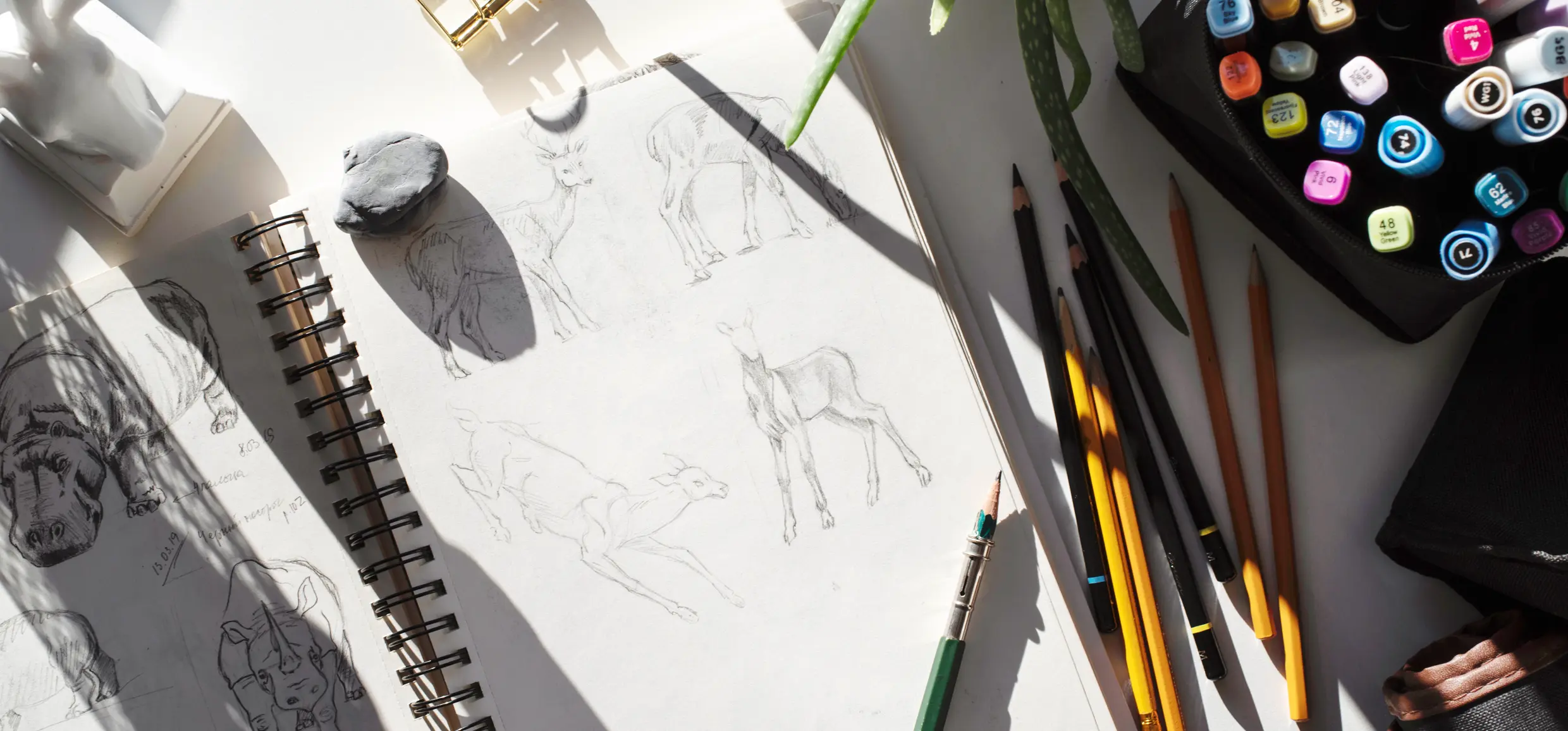
To sketch on the fly, there's no need to carry around your entire studio: the idea is to be light, responsive, and ready to pull out your sketchbook whenever a scene inspires you. The basic materials often fit in a small case and can follow you everywhere!
The most important thing is, of course, a sketchbook. Choose one that’s sturdy enough to be taken outdoors, with a size that feels comfortable for you. A5 is a good compromise: neither too big nor too small. Some people prefer sketchbooks with slightly textured paper, while others opt for smooth pages, so try out several options to find out what suits you best.
Next, you need a tool for quick drawing: pencil, mechanical pencil, pen, fine liner, etc. The main thing is that it slides well and allows you to draw without worrying about perfection. Ink pens or fine liners have the advantage of forcing you to commit to each line, which can be very educational.
And there you have it, in essence, you don't need anything else!
The mindset
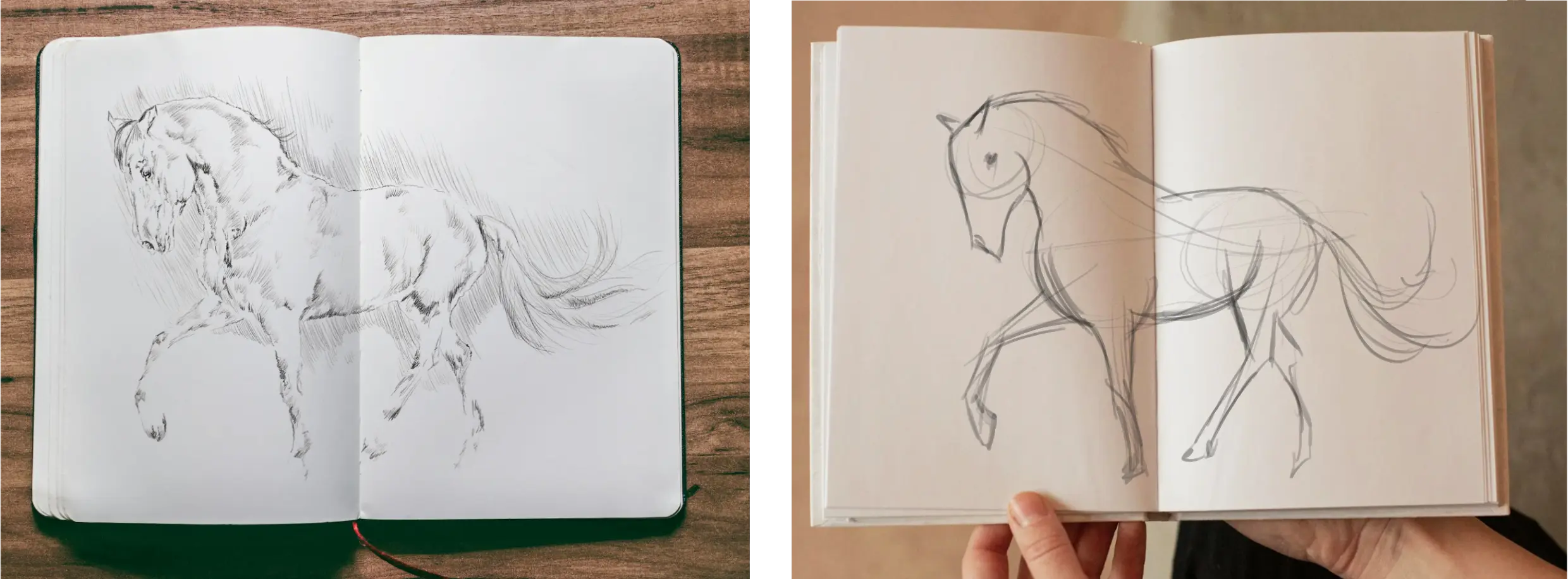
Although the purpose of live drawing is to fill entire notebooks with sketches and observations, it is not uncommon to also face a very simple fear: ruining your notebook. Many artists buy notebooks, are ready to dive in, and then fear that their drawings will not turn out well, that they will waste space, or have pages with poor compositions... and ultimately, due to these worries, they do not draw.
We always expect our sketches to look like the one you have at the top left, whereas in reality, they closer resemble the one at the top right, if not, they are even less refined and that's totally normal!
When drawing from life, you must learn to let go. There's no point in seeking perfection or a "successful" drawing: the idea is to capture an atmosphere, a movement, an impression. You need to learn to observe with curiosity, to draw without overthinking, to make mistakes without stopping. Each sketch becomes an exercise, a trace, a little piece of your view of the world. And the more you fill your sketchbook without pressure, the more you will naturally progress.
It's a moment for oneself, a lively workout, not a beauty contest. Allow yourself to fail, to draw quickly, to not finish everything. It’s in this free and spontaneous rhythm that your stroke becomes more fluid, more expressive… and that the pleasure returns.
Drawing a landscape from life
Because there's nothing better than a concrete example, I suggest we look at how to draw a landscape and a living being from life.

The idea with live sketching is to go out and draw when you find something aesthetic or interesting. Imagine that you have this view in front of you: the first reflex is to set a frame, simply because otherwise you will look at everything around you and perhaps be less focused on what you see. Imagine you are taking a photo. This frame will help you choose what you really want to draw, simplify the scene, and prevent you from getting confused.
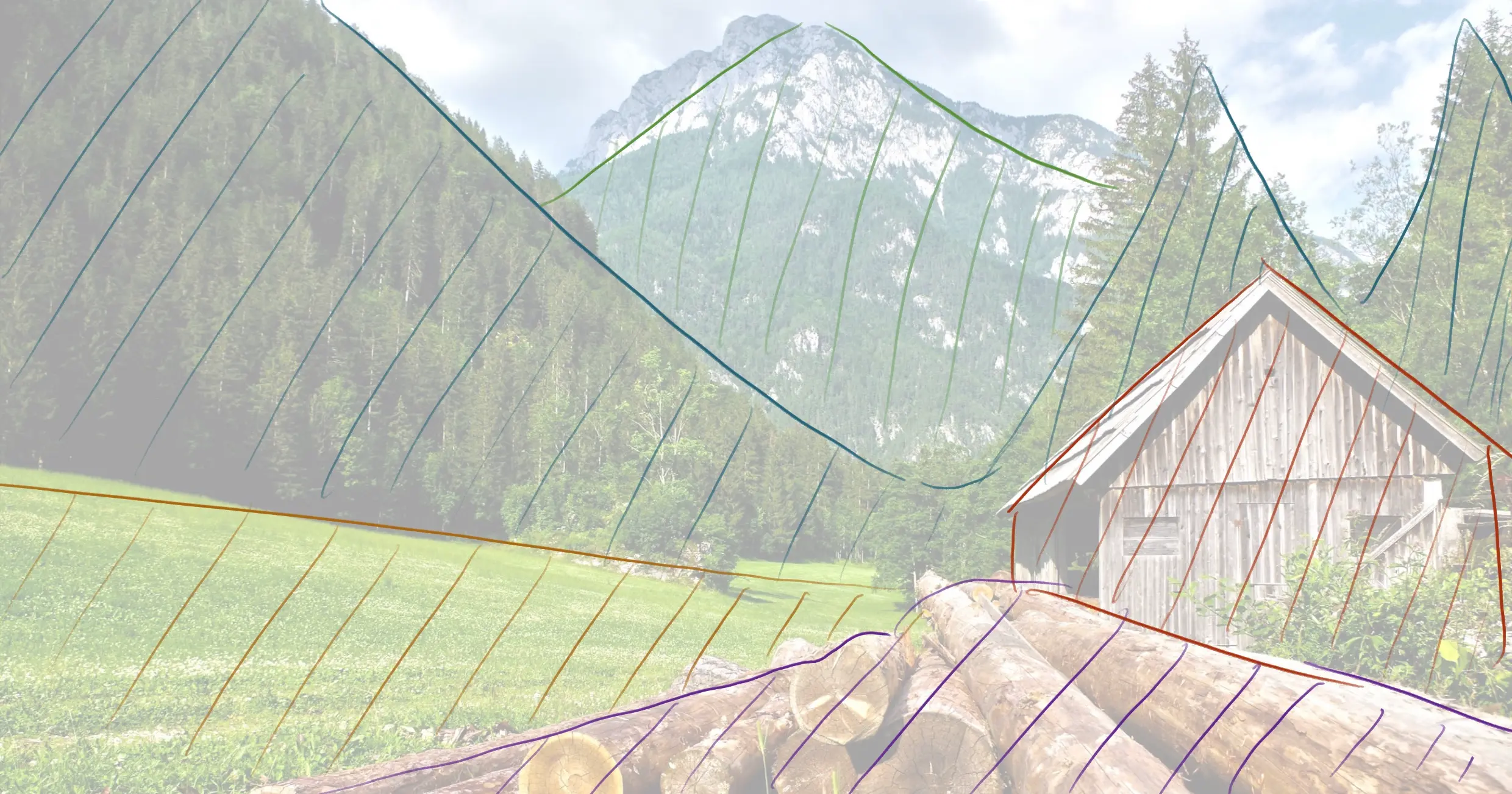
Once the framework is set, here comes the most important moment: observation. Look at everything that makes up the image, its main shapes, the different layers, the interaction of elements, and the connection between them. Initially, this may take some time, but with practice, you will find that it becomes a reflex that will take only a few seconds.
Here, we can observe different layers: the mountain in the background, the trees just behind, the ground and the house, and finally, in the foreground, the logs of wood.
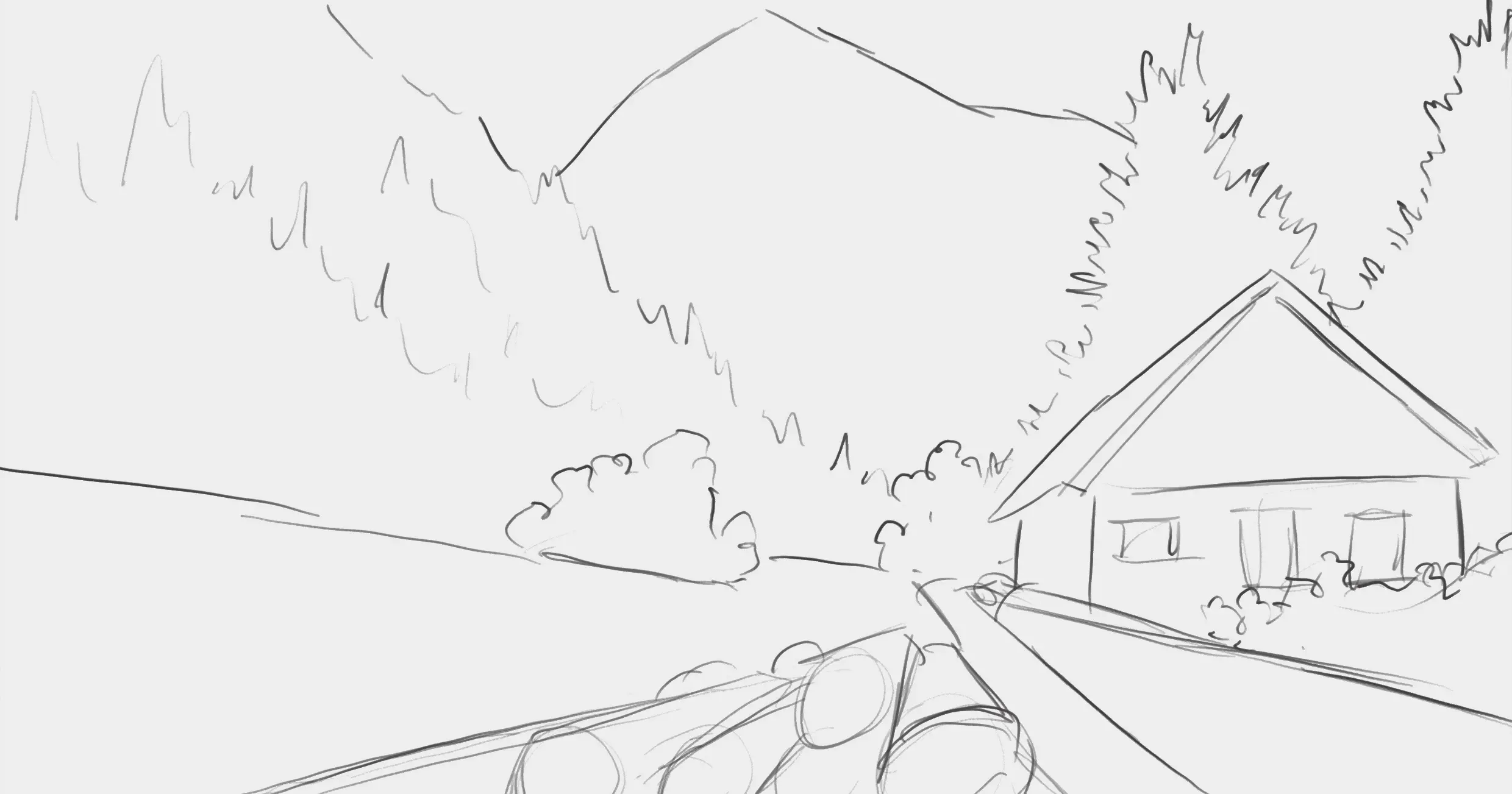
Once you've fully absorbed the landscape, you can come back and sketch the main elements in a very simplistic way. This will allow you to check if they are consistent with each other.
If you've made mistakes in proportions, don't worry, don't erase anything as you'll spend too much time on it. Just tell yourself that with practice, you'll get a better grasp of scale ratios.
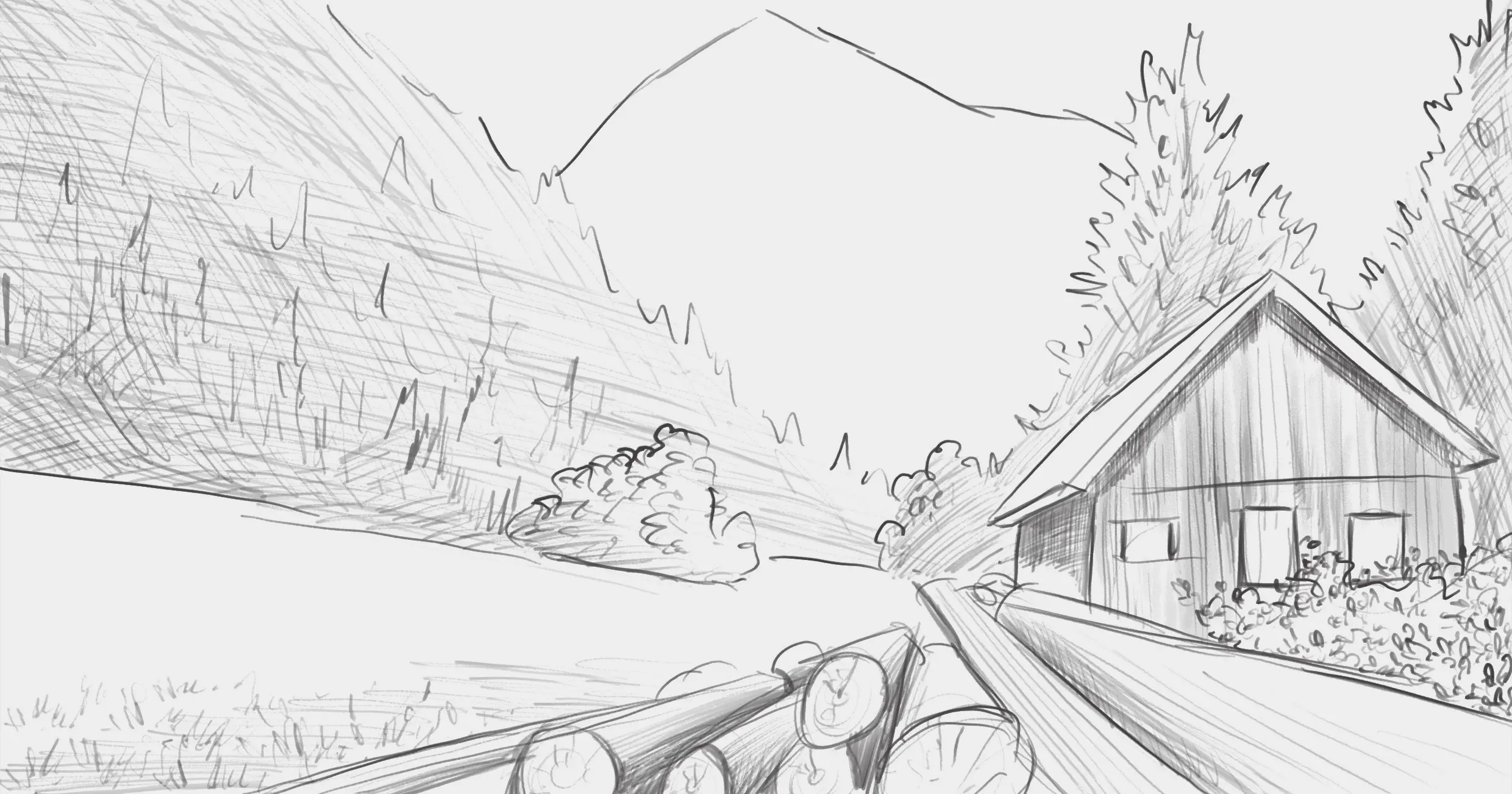
Once you are done, and if you still have some time left, then you can add a few details, such as quick hatching to suggest material or light. Again, try to keep your strokes energetic and simplify with expressive lines.
Drawing a living being from life
The principle we just saw for landscape drawings also works for drawings of living beings:
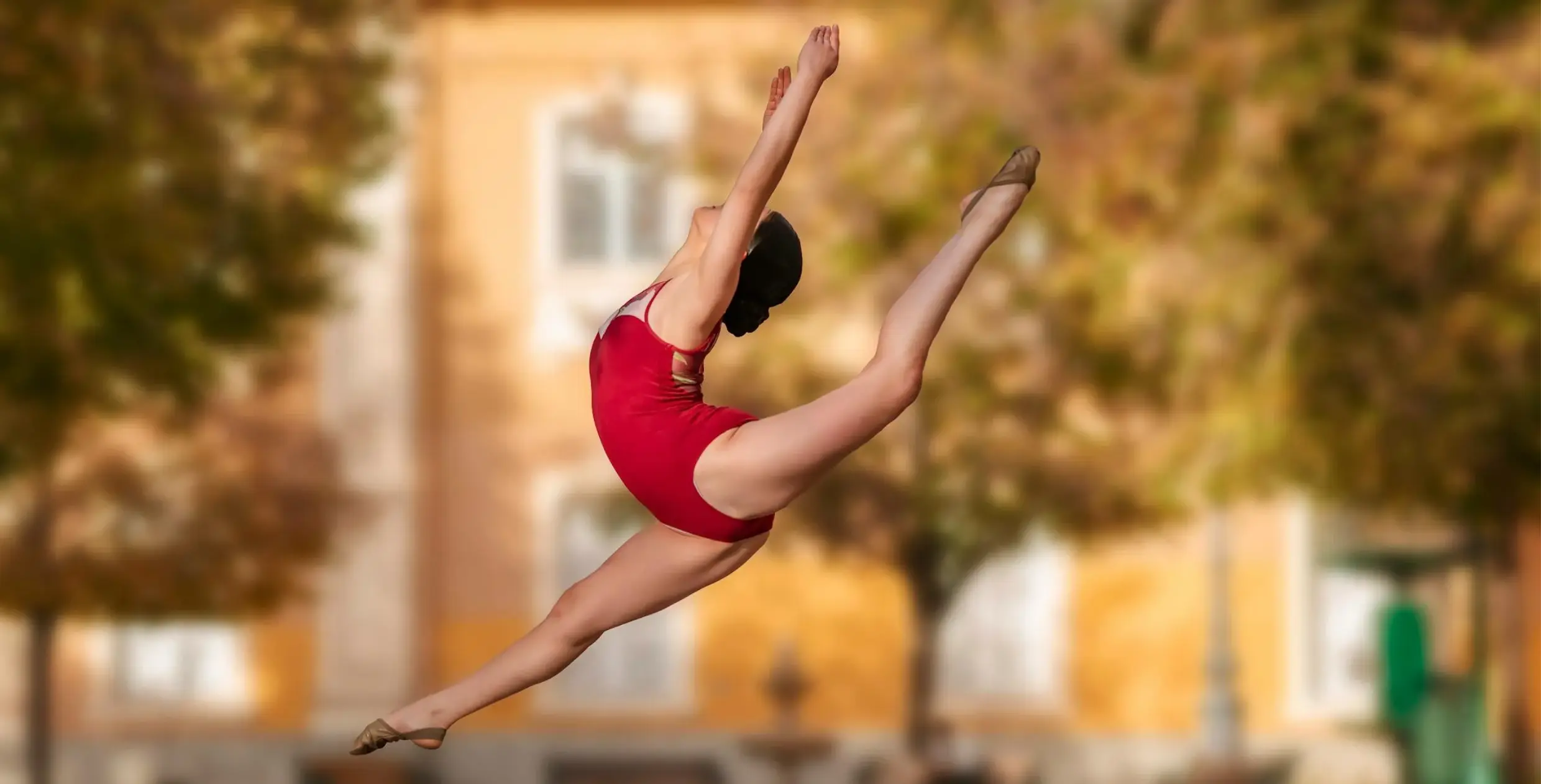
Start by setting the frame.
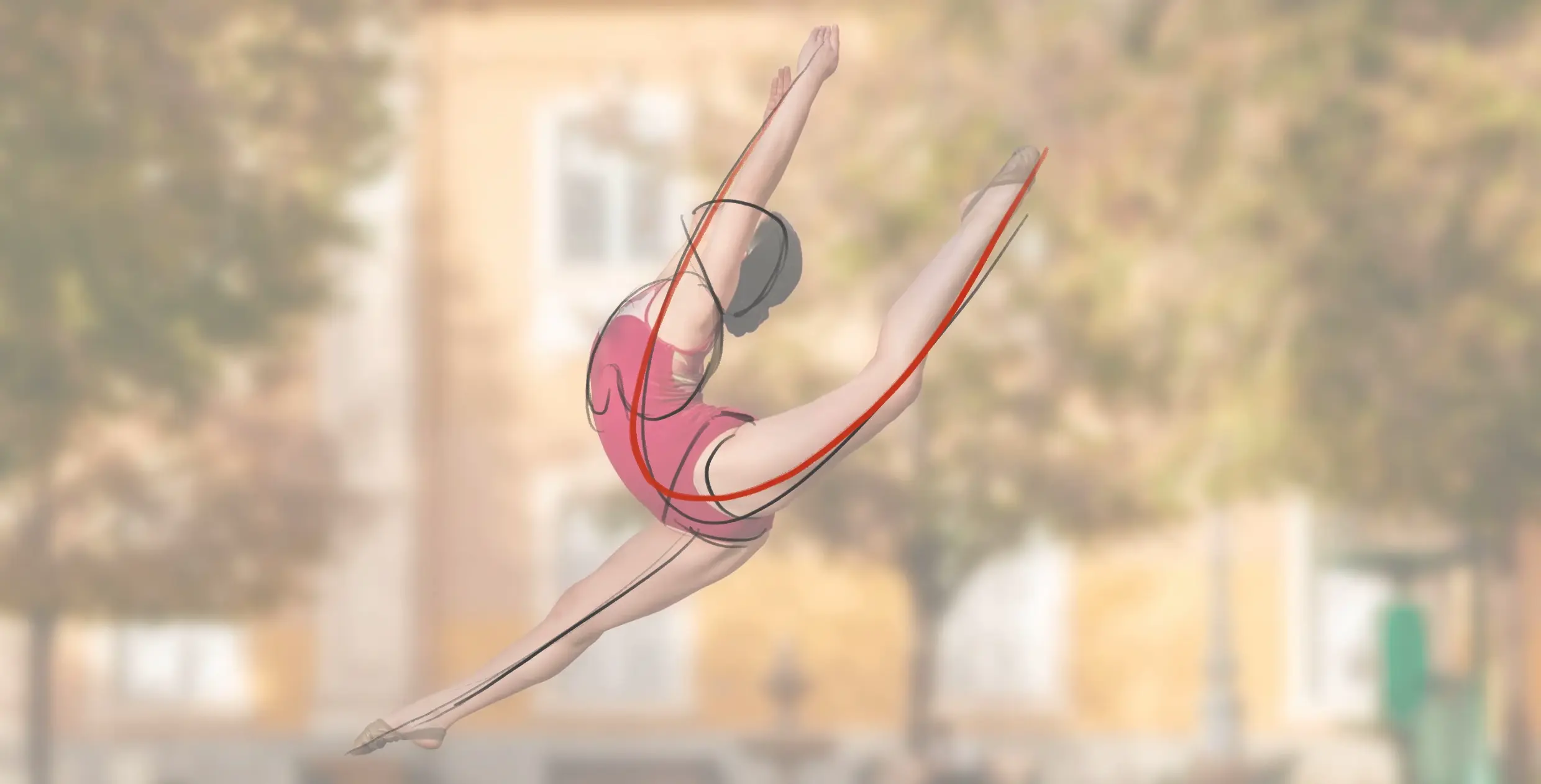
Observe the dynamics of the pose and try to understand the different placements of the head, torso, and pelvis as well as the movement of the arms and legs. Drawing a living being from life is even more complex than that of a landscape because we move very quickly.
A pose like the one above is impossible to draw at the same time as the dancer performs it, but you can take the time to observe and then redraw it.
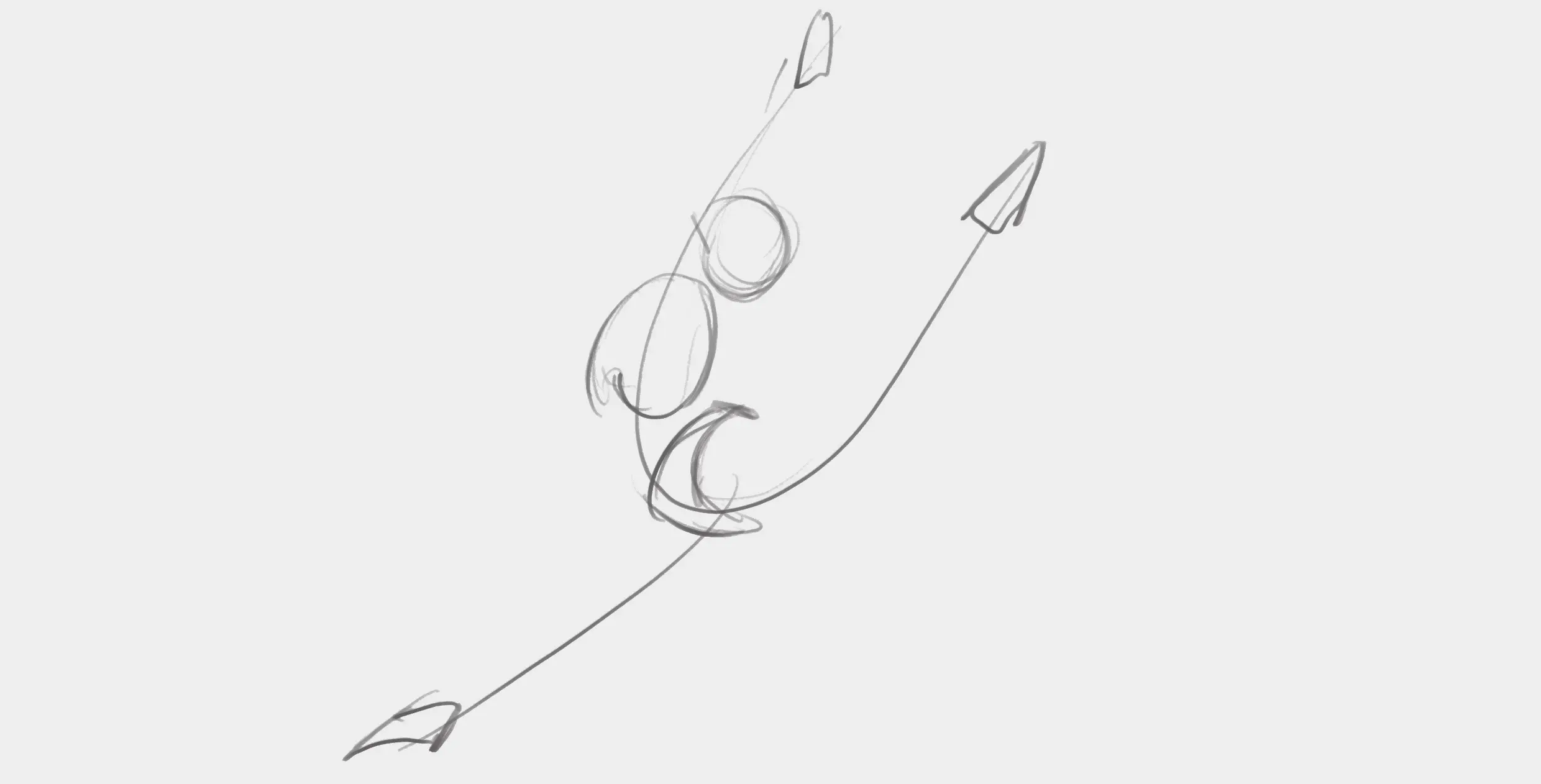
Summarize the pose: using only the torso, pelvis, and head as simple volumes and lines for the arms and legs can be enough to convey the general movement. The more dynamic your lines, the more you will be able to create strong and impactful silhouettes.
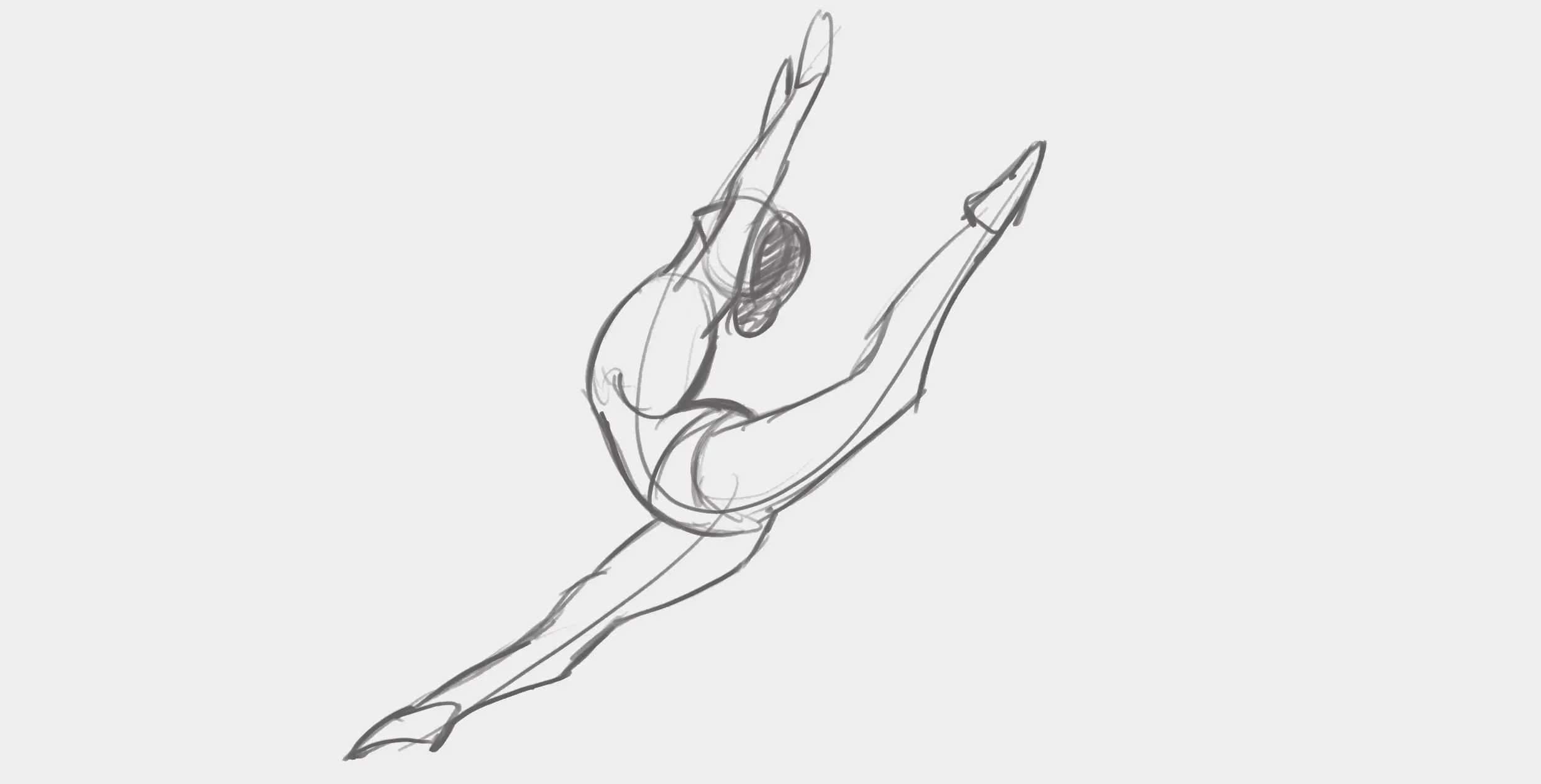
If you have some time, you can then add more detailed anatomical details, or even accessories.
The stopwatch exercise
If you still have some apprehension about getting started, I recommend a very effective exercise that will force you to let go. You can do it from home with a reference photo (or even by observing your surroundings) or outside.
Start by setting a frame to your view and give yourself one to two minutes to observe everything around you in detail: the elements, the composition, the layers, the interaction, the light… in short, try to understand as much as you can. Then, give yourself 2 minutes to redraw what you see (you can look again, of course, but remember that 2 minutes is a short time).
Once the two minutes are up, try doing the same exercise again, but this time give yourself only 30 seconds to redraw it. You’ll notice that the shorter the timer, the less you'll feel like erasing or going into details; your strokes will be more dynamic and you'll capture the essentials.

In conclusion, live drawing is not essential if you want to progress in drawing, but it is a really interesting exercise.
You will see that by freeing yourself from your own expectations, you will enjoy drawing and also make a lot of progress.
I hope you enjoyed this article! 😊
Writer and Illustrator: Chloé Pouteau

